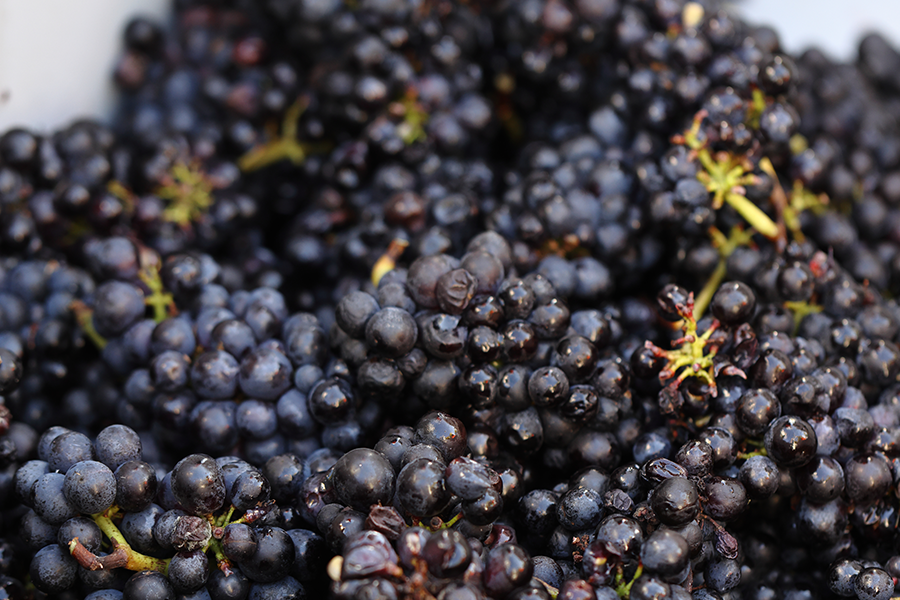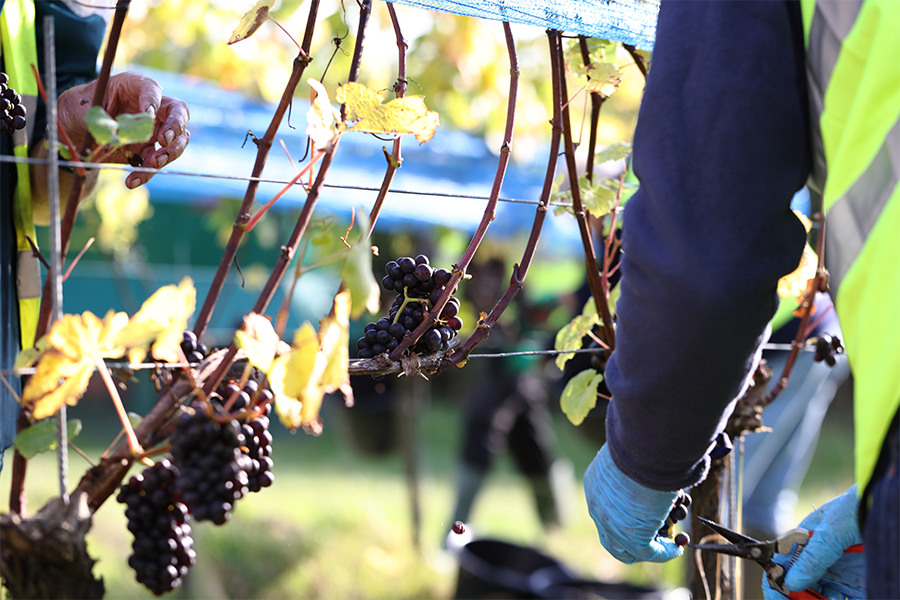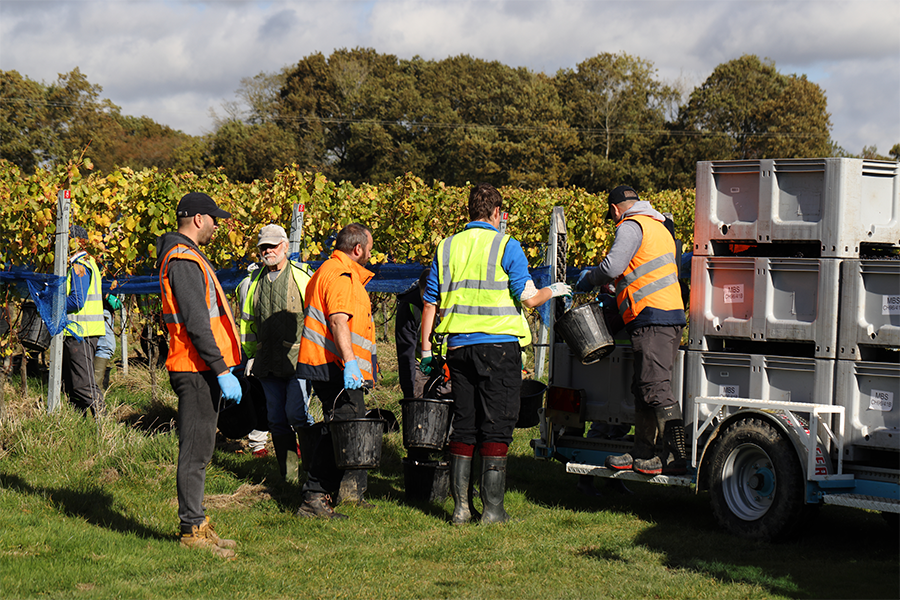Harvest at Gusbourne Estate
Author: Issariya Morgan
Gusbourne Estate is one of England’s best-known wine producers, having been making wines from the Champagne varieties since the early 2000s. We visited the estate at the end of October for a first-hand look at the harvest. Photos by Krystian Krzewinski.
Gusbourne Estate is located not far from the southern edge of Kent, just a 20-minute drive from the coast. We arrive on a glorious day in late October, and it’s easy to see why the region is considered the Garden of England: autumn sunlight washes over the vines, their leaves now golden, against a gentle sea breeze.
We’re warmly greeted by Sophie Sturdy, the estate’s Head of Experiences. Sophie explains that Kent’s southerly location provides prime conditions for growing grapes, with a warming influence from the sea and, crucially, the same clay soils that are found in Burgundy.
Gusbourne also has a site in West Sussex, which offers up its own distinct conditions in the vineyard, but both vineyards are planted with the classic Champagne varieties: Pinot Noir, Pinot Meunier and Chardonnay.

“We’ve got two different soil types, two different microclimates,” Sophie tells us. “We’re much closer to the sea here in Kent, whereas our Sussex site is at a higher altitude, so a little bit cooler, with chalk soils rather than clay.
“When we’re harvesting, all the grapes come here to the winery in Kent, but we’ll keep the different vineyards, grape varieties and clones separate. We usually end up with around 200 base wines which we’ll blend together, particularly with the sparkling wines.”

As we’re speaking, Sophie guides us around Gusbourne’s home, The Nest, so named for the estate’s historical roots. The name Gusbourne is derived from the de Goosebourne family, who owned the original estate in 1410. The de Goosebourne family crest bears three geese, which has been adapted into the “Goosemark” imprinted on Gusbourne’s wines today.
After our introductory tour of The Nest, Sophie leads us into the vineyard. There’s a buzz among the vines, with a large group of pickers working through the rows of grapes. Harvest is now reaching its final stages, and each bunch is carefully picked by hand to preserve the delicacy of the fruit.

The pickers are a mix of Kent locals and seasonal workers, who have travelled to the UK specifically to work their way through England’s vineyards. Kent, being closest to the coast, is typically the starting point of this harvest journey. Yet Brexit has posed a real challenge here, with far fewer pickers available to work than usual.
The motivations that draw pickers to a harvest are varied. For John Durkin, it’s a great opportunity to get some fresh air and “go for a long walk every day”. It’s his first harvest, he tells me, but he only lives down the road, so it was easy to get involved. For others, such as the seasonal workers who come in from the EU, it’s an essential source of income.

We emerge from the vines, to be greeted by Jonathan White, the estate’s Head of Marketing. Canapés stream past us temptingly, having been prepared for members of Gusbourne’s wine club, and it’s impossible to resist them. As we move onto taste a host of wines, Jonathan talks us through the estate’s philosophy.
“The idea of innovation and experimentation is a core part of our approach,” he explains. “We almost see ourselves as having one foot in the Old World and one foot in the New.”

This becomes clearer as we enter the winery, where the team are busy sorting grapes which have just come in from the vineyard. Here, we meet Head Winemaker and Chief Executive Charlie Holland, who exemplifies this philosophical approach.
“We definitely follow more of a New World mentality,” Charlie says, over the whir of machinery in the winery. “There’s a camaraderie around here [in Kent], especially when it’s a tricky vintage. There are no secrets. It’s about what you’re prepared to find out, and about sharing that knowledge.
“There are a lot of Old-World methods and techniques which we use, but we marry that with science, experience, knowledge and sharing. I think England generally falls into this camp.”

Both Jonathan and Charlie agree that it’s an exciting time to be part of the English wine industry. “It’s just exploded so quickly,” says Charlie. “It’s not often you get to be so involved in a new wine region.”
“We’re part of the second wave, I guess,” adds Jonathan, “after the early adopters like Nyetimber, Hambledon and Ridgeview.”
“Yeah, we’re at the cutting edge rather than the bleeding edge,” Charlie says wryly.
Today, 17 years after Gusbourne first arrived, it’s fair to say that they’ve left an indelible imprint on the English wine industry.
Explore our selection of Gusbourne wines here.


